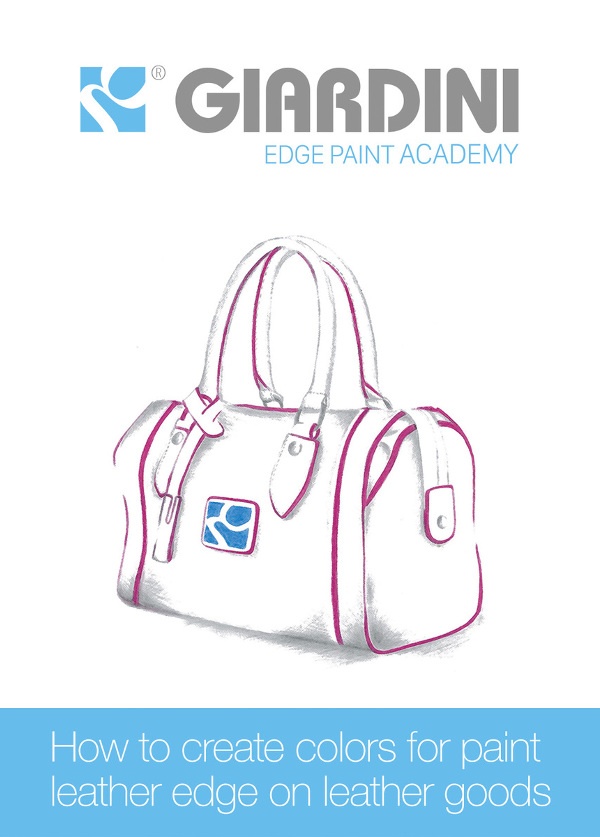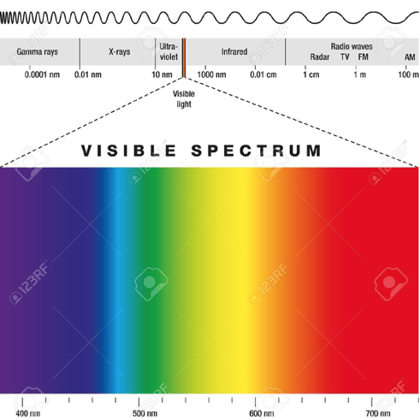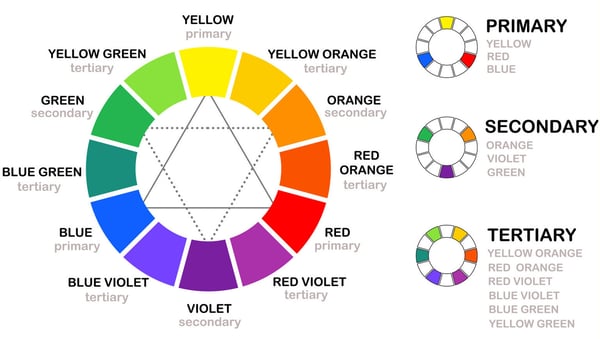In this document you will learn:

Click the link to go directly to a specific topic.
Why create colors by yourself?
Classical process for the color creation
In the world of leather edge finishing (or costs) it is becoming increasingly popular to use colored finishes that go to express the creativity of stylists and designers. In the fashion trend today, about 50% of the items produced has a colored edge in various shades, unlike a few years ago when the leather edges were mostly finished in black or brown colors.
Today it is therefore necessary to have available a wide range of colors that can be used on the leather goods that are to be created.
This guide will give you the basics on color theory for the creation of the colors, and the methodology to be used to achieve the desired result.
When you create a new prototype or you want to create a new product, choosing a color for the leather edge that best expresses your creativity can really make the difference between a quality product and an anonymous product. If you do not have the availability of a full range of colors, quickly meet this need is a problem that may recur frequently throughout your productions, limiting your work.
Create colors by yourself means having the availability of any color in just minutes and possibly adapt it to fully express the emotion you want to convey, without having to buy new paint resulting in extra costs and production delays.
It is to reach this condition that we are here to help: after reading this guide you will be able to independently resolve all issues related to color, with no limitations or delays in your creation.
In biophysics the color is the visual perception generated by the nerve signals that the photoreceptors of the retina sends to the brain when they absorb electromagnetic radiation of certain wavelengths and intensity, in the so-called spectrum of visible light.
Each color, primary or secondary, raises and represents an emotion, a state of mind and can be tied to a particular event. The experience of color is subjective and may refer to native culture that suggests the personal perceptions of a particular color.

If you are interested in learning more about this topic, read our blog post about color and our colored paints.
In the 18th century the first color theory was formulated on the basis of the three primary colors: red, yellow and blue (RYB) because it was believed possible to have all other existing colors by mixing these three colors. This theory has been very well known by all the artists, dyers and painters of the period, and all those who have worked with pigments.
The primary colors you can build the color wheel (or the color circle), which is the organization of color hues around a circle, and is used to show the relationships between the primary colors, secondary colors, tertiary colors, etc.
The secondary colors are the combination of the three primary colors, a combination of secondary colors with those present at their side will produce the tertiary colors, and so on in an infinite number of combinations. All colors may then have a different brightness, and it was common among some painters darken a color with the addition of black paint - thus producing color called shades - or lighten the color with the addition of white - the color production called tints. This is not always the best way to proceed, and the original colors could also move in different shades by adding black or white.

In the old traditional process for creating a color the primary colors (Red, Yellow, Blue) were used as the basic colors and using the color wheel they proceeded with gradual approach to the color tone that you wanted to create, by adding time to time measured amounts of each single basic color. The Classical Process includes 5 steps:

STEP 1: SELECT THE BASIC COLORS. As a first step you had to have available a series of basic colors, which could include, in addition to the primary colors also the secondary colors.
 STEP 2: FIND THE TONE OF REFERENCE. Using the color wheel identifies which color came closest to the tone you want to achieve, whether it is a primary color, secondary or tertiary.
STEP 2: FIND THE TONE OF REFERENCE. Using the color wheel identifies which color came closest to the tone you want to achieve, whether it is a primary color, secondary or tertiary.
 STEP 3: CREATE THE TONE OF REFERENCE. After identifying the reference tone, if it had been a secondary color or a tertiary color it had to be created by mixing the primary colors.
STEP 3: CREATE THE TONE OF REFERENCE. After identifying the reference tone, if it had been a secondary color or a tertiary color it had to be created by mixing the primary colors.

STEP 4: NOTE THE COLOR FORMULA. Each time that was created a new mixing, the related formula were saved, in order to create as a data base of reference tones to be used.
 STEP 5: ADJUST THE COLOR ACHIEVED. From this first point of arrival, they continued to add colors available until the desired color tone was reached.
STEP 5: ADJUST THE COLOR ACHIEVED. From this first point of arrival, they continued to add colors available until the desired color tone was reached.
When people used the classic method, the essential basic colors were red, yellow, blue, white and black. To these could be added the secondary colors ready for use. To simplify and accelerate the creation of new colors, a careful selection of basic colors allow you to save time during the mixing process. With the classic method the only reference to be used was the color wheel, however it was a very limited reference when compared to the vastness of color shades achievable.
With over 30 years of experience in the formulation of colors, we were able to provide our customers a simplification of the traditional method for color formulation, providing a range of information that will save time for our customers and including the following step:

STEP 1: CHOOSE THE MIXED COLOR AS REFERENCE. Instead of starting from the color wheel, you already have 100 reference tones to choose from, represented by Mixed Colors.
 STEP 2: FIND THE CORRESPONDING COLOR FORMULA. GIARDINI offers its customers all the formulas for the creation of the Mixed Colors starting from its Standard Colors.
STEP 2: FIND THE CORRESPONDING COLOR FORMULA. GIARDINI offers its customers all the formulas for the creation of the Mixed Colors starting from its Standard Colors.
 STEP 3: MEASURE THE PAINT USING A GRADUATED CYLINDER. Without the need to buy very expensive precision balance you can measure the paint using the graduated cylinder.
STEP 3: MEASURE THE PAINT USING A GRADUATED CYLINDER. Without the need to buy very expensive precision balance you can measure the paint using the graduated cylinder.
 STEP 4: STIR YOUR MIX AND APPLY THE DESIRED COLOR. After completed the mixing and after conducting a proper stir you can apply the color and check the tone.
STEP 4: STIR YOUR MIX AND APPLY THE DESIRED COLOR. After completed the mixing and after conducting a proper stir you can apply the color and check the tone.
GIARDINI offers a comprehensive color range that consists of 118 tones, 18 standard colors and 100 Mixed Colors. Although the standard colors available are 18 you can realize all the mixed colors using only 10 standard colors that have been chosen for you. This limited range allows to have all the colors of the color chart readily available with a small investment, also to create new tones if you need it.
We also provide to get you the Colors Formula, that is the exact measurement of each basic color to be mixed to obtain a desired color. The Colors Formula lists the basic colors needed and the number of parts (or weight) that corresponds, to get as final result of the mixing, the desired tone. All of the Mixed Colors formulas are included within the Edge Paint Color Box and are available for all our customers.
The Edge Paint Color Box is a package designed specifically for those who want to have all the material to create colors in a unique box. It is available both in the version with colors in Semi-Dense or Dense type.
Use the Color Box to create the color, it allows you to have several advantages over the classic method: